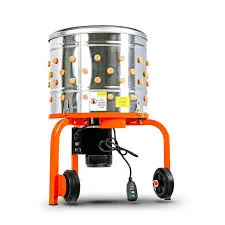floating fish feed extruder
Nov . 19, 2024 19:32 Back to list
floating fish feed extruder
The Evolution and Importance of Floating Fish Feed Extruders
Floating fish feed has become a pivotal aspect of aquaculture, providing essential nourishment to various fish species, including tilapia, salmon, and catfish. At the heart of this process is the floating fish feed extruder—a sophisticated piece of machinery that transforms raw materials into high-quality feed with enhanced nutritional value and attractive floating properties.
The process of fish farming has gained immense popularity over the past few decades, driven by an increasing global demand for seafood. According to the Food and Agriculture Organization (FAO), aquaculture production has been rising steadily, accounting for more than half of the fish consumed worldwide. As the industry grows, the need for efficient and effective feeding methods becomes paramount. This is where the floating fish feed extruder comes into play.
Floating fish feed extruders use a combination of heat, moisture, and pressure to cook and shape feed ingredients into pellets. The raw ingredients, often a blend of fish meal, soybean meal, corn, wheat, and various vitamins and minerals, are first ground into a fine powder. This powder is then conditioned with water and subjected to heat and pressure inside the extruder. The result is a semi-moist mixture that is forced through a die to create pellets of various sizes and shapes.
One of the key advantages of floating fish feed is its ability to remain buoyant on the water's surface. This characteristic is crucial for ensuring that fish can easily access the feed, ultimately promoting healthy growth rates and reducing feed wastage. Unlike sinking feed, which can quickly disperse and decompose at the bottom of the tank or pond, floating feed allows for better monitoring of feeding activity and prevents water contamination.
floating fish feed extruder

Furthermore, the extrusion process enhances the digestibility of the feed, making nutrients more accessible to fish. The high temperatures involved in extrusion kill harmful pathogens and reduce anti-nutritional factors, leading to a more palatable and nutritious product. This nutritional boost is essential for farmed fish as it directly impacts their growth performance, health, and resistance to diseases.
In addition to improving the quality of feed, the floating fish feed extruder has also been associated with economic benefits for fish farmers. By producing high-quality feed that supports optimal growth rates, farmers can achieve better feed conversion ratios (FCR), which is the measure of an animal's efficiency in converting feed mass into increased body mass. A lower FCR translates into reduced costs and increased profitability. Moreover, with advancements in extrusion technology, manufacturers can produce feeds tailored to the specific dietary needs of different fish species, further enhancing growth and health outcomes.
An increasing awareness of sustainability has also driven innovation in the floating fish feed industry. Many extruder manufacturers are now focusing on sourcing ingredients from sustainable sources, such as plant-based proteins and non-catch fish meal alternatives, to reduce the pressure on wild fish stocks. This shift not only addresses environmental concerns but also aligns with consumer preferences for sustainable products in the seafood market.
In conclusion, floating fish feed extruders play a significant role in the aquaculture industry by enhancing feed quality, promoting fish health, and increasing the efficiency of fish farming operations. As the demand for sustainable seafood continues to grow, the importance of technological advancements in fish feed production will only increase. By investing in high-quality floating feed, aquaculture practitioners can ensure a viable and profitable future in fish farming, while also contributing to responsible and sustainable fishing practices. The journey from raw materials to high-quality floating feed is a testament to the advancements in aquaculture technology, supporting both economic growth and environmental stewardship. The continuous evolution of floating fish feed extruders will remain crucial in meeting global seafood demands in the years to come.
-
Hot Sale 24 & 18 Door Rabbit Cages - Premium Breeding Solutions
NewsJul.25,2025
-
Automatic Feeding Line System Pan Feeder Nipple Drinker - Anping County Yize Metal Products Co., Ltd.
NewsJul.21,2025
-
Automatic Feeding Line System Pan Feeder Nipple Drinker - Anping County Yize Metal Products Co., Ltd.
NewsJul.21,2025
-
Automatic Feeding Line System - Anping Yize | Precision & Nipple
NewsJul.21,2025
-
Automatic Feeding Line System - Anping Yize | Precision & Nipple
NewsJul.21,2025
-
Automatic Feeding Line System-Anping County Yize Metal Products Co., Ltd.|Efficient Feed Distribution&Customized Animal Farming Solutions
NewsJul.21,2025






